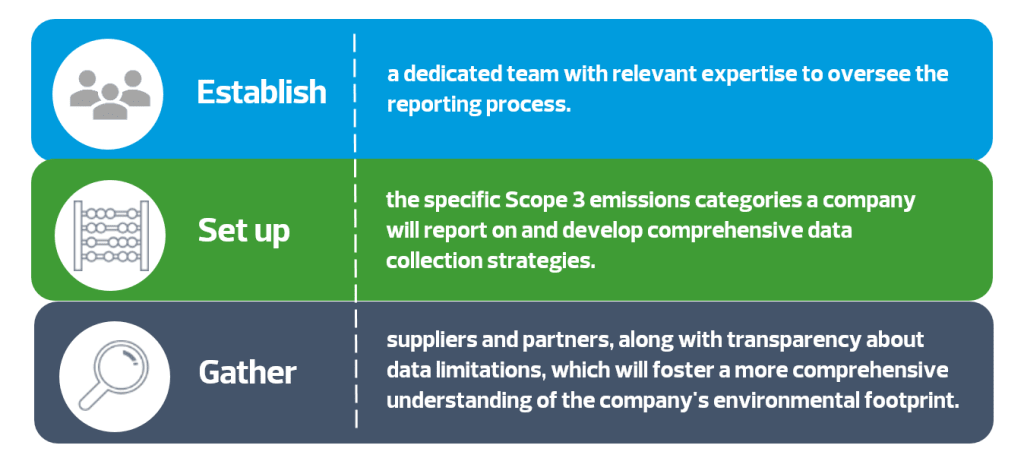Embracing sustainability
As climate change escalates, businesses are urged to prioritise sustainable practices to ensure long-term resilience and compliance. While it has become standard for companies to measure and report on Scope 1 and 2 greenhouse gas (GHG) emissions – covering direct and indirect emissions from a company’s operations - Scope 3 emissions are now gaining significant attention.
Emissions under this category include all other indirect emissions resulting from business activities but outside a company's direct control. Accurately understanding and reporting these emissions across a company's value chain is essential for a comprehensive sustainability strategy.

SOURCE: US EPA Scope 3 Standard, page 5
These indirect emissions typically arise from three stakeholders in the value chain: suppliers, customers, and employees. Given that Scope 3 emissions represent the largest share of a company's total impact, it is crucial to prioritise their management to achieve a comprehensive environmental perspective.
Small steps to overcome a challenging road
Scope 3 reporting presents significant challenges due to its extensive scope. For one, gathering accurate data across the entire value chain, especially for upstream and downstream activities, can be difficult and often requires companies to rely on estimates and collaboration with external stakeholders. Selecting the most appropriate methodology further adds another layer of complexity.
For businesses to prepare comprehensive Scope 3 emissions reports, dedicated resources and expertise are essential, necessitating careful planning for time and manpower allocation.
Businesses can adopt the below strategic 3-step ESG approach to overcome these challenges:

Ultimately, companies would need to prioritise selecting an appropriate reporting methodology that fits the company’s current state of readiness. Additionally, continuous improvement is needed to ensure relevance throughout changes in the company.
A big win for everyone
Despite the challenges, the value proposition of Scope 3 reporting is significant. With an increased focus on sustainability practices and transparency, identifying key areas for emissions reduction plays a key role in ensuring credibility. As such, formulating a way to gain valuable insights into the full scale of their carbon footprint and how to reduce it will benefit a company in the long run.
Mapping their value chain emissions enables companies to identify and mitigate environmental risks associated with their suppliers and partners, strengthening supply chain resilience and avoiding potential disruptions.
Addressing Scope 3 emissions also encourages innovation in product design, sourcing practices, and operations, leading to the development of more sustainable products and processes that foster long-term environmental and economic benefits.
Looking ahead
In conclusion, Scope 3 GHG emissions reporting is no longer an option but a necessity for companies committed to sustainability.
While challenges exist, embracing transparency offers valuable insights, facilitates informed decision-making, and ultimately paves the way for a greener future.
As businesses navigate an increasingly environmentally conscious landscape, proactive reporting of Scope 3 emissions will define responsible corporate citizenship.



